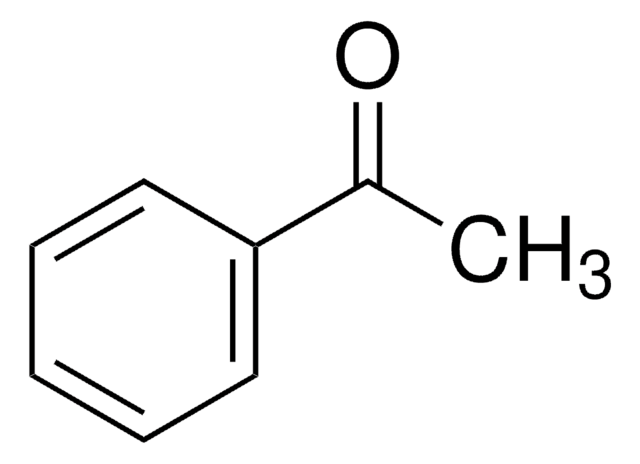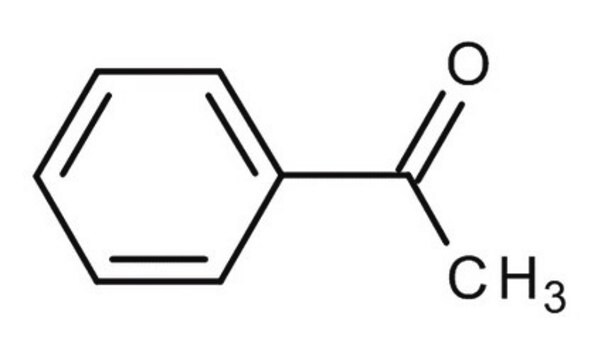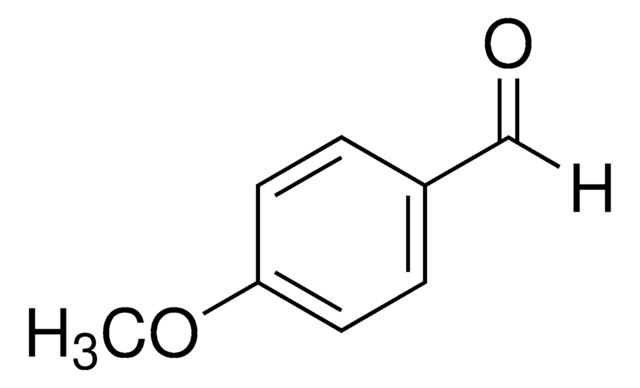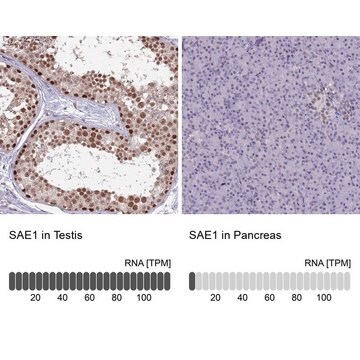W200910
Acetophenone
natural, 98%, FG
Synonym(s):
Methyl phenyl ketone
About This Item
Recommended Products
biological source
cassia oil
grade
FG
Fragrance grade
Kosher
natural
agency
follows IFRA guidelines
reg. compliance
EU Regulation 1223/2009
EU Regulation 1334/2008 & 178/2002
FDA 21 CFR 117
vapor density
4.1 (vs air)
vapor pressure
0.45 mmHg ( 25 °C)
1 mmHg ( 15 °C)
assay
98%
form
liquid
semisolid
autoignition temp.
1058 °F
greener alternative product characteristics
Less Hazardous Chemical Syntheses
Use of Renewable Feedstocks
Learn more about the Principles of Green Chemistry.
sustainability
Greener Alternative Product
refractive index
n20/D 1.534 (lit.)
bp
202 °C (lit.)
mp
19-20 °C (lit.)
density
1.03 g/mL at 25 °C (lit.)
application(s)
flavors and fragrances
documentation
see Safety & Documentation for available documents
food allergen
no known allergens
fragrance allergen
no known allergens
greener alternative category
organoleptic
almond; cherry; coumarin; nutty; sweet; vanilla
SMILES string
CC(=O)c1ccccc1
InChI
1S/C8H8O/c1-7(9)8-5-3-2-4-6-8/h2-6H,1H3
InChI key
KWOLFJPFCHCOCG-UHFFFAOYSA-N
Looking for similar products? Visit Product Comparison Guide
General description
signalword
Warning
hcodes
Hazard Classifications
Acute Tox. 4 Oral - Eye Irrit. 2
Storage Class
10 - Combustible liquids
wgk_germany
WGK 1
flash_point_f
179.6 °F - closed cup
flash_point_c
82 °C - closed cup
Certificates of Analysis (COA)
Search for Certificates of Analysis (COA) by entering the products Lot/Batch Number. Lot and Batch Numbers can be found on a product’s label following the words ‘Lot’ or ‘Batch’.
Already Own This Product?
Find documentation for the products that you have recently purchased in the Document Library.
Our team of scientists has experience in all areas of research including Life Science, Material Science, Chemical Synthesis, Chromatography, Analytical and many others.
Contact Technical Service






